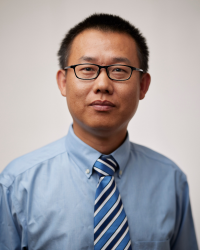
Assistant Professor
Email: hding@ou.edu
Phone: (405) 325-4043
Office: Felgar Hall 200
Office Hours: By appointment only
Website: https://sites.google.com/view/amcel/home
Education
Ph.D, Mechanical Engineering (2014)
University of South Carolina
M.S., Materials Science and Engineering (2009)
University of Science and Technology of China
B.S., Materials Science and Engineering
Jilin University, China
Research Focus
Experience and Awards